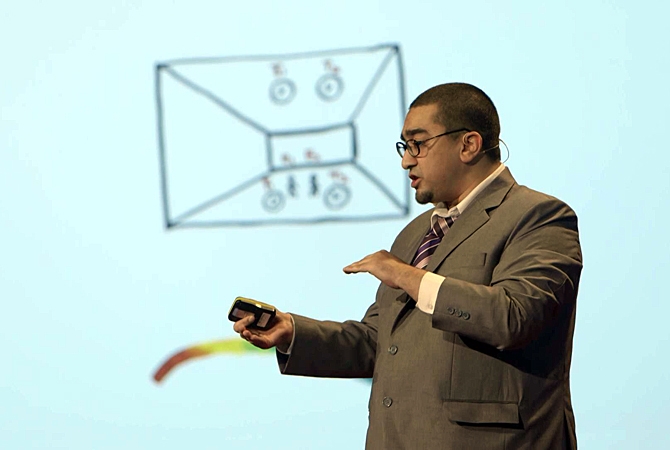Although most will recognize the idea of the space-time continuum and the multiverse to some extent, much of this comes from various watchings of “Back to the Future” or “Spiderman: Into the Multiverse.” Dr. Mir Faizal, on the other hand, has set out to prove the existence of other dimensions – and to make clear what that means.
The physicist’s research covers everything from string theory to quantum gravity. His current work at CERN’s Large Hadron Collider in Switzerland may show that the creation of miniature black holes is possible here on Earth, and they would be evidence of contact with parallel universes.
Dr. Mir Faizal deals with complex causes
Faizal started his education as an engineer, but shifted his career to particle physics. “I wanted to work on fundamental science, and engineering was just applied science,” explains Dr. Faizal. “I was more interested in the laws of nature, rather than the application of those laws.”
A lot of Faizal’s previous work focuses on the theoretical. One of his most recent publications with researchers M. Khalil and Saurya Das posits that time may not be linear, but discreet. The proposal has not been tested yet, but says that, “the physical universe is really like a movie or motion picture in which a series of still images show[n] on a screen creates the illusion of moving images.”
Faizal has in the past described the inconsistencies between existing theories of physics. Specifically, he discusses those pertaining to the beginning of the universe. In the past, he worked with a team to show that some of these inconsistencies cast doubt on our current conception of physics and the universe. Specifically, he notes that they do not apply to certain points in the gravitational field called singularities.
Mir Faizal believes in collaboration across fields
Originally from Kashmir, Faizal did his undergraduate and graduate studies both in India and the UK. He completed two post-doctorate degrees, and has taught as an adjunct professor in multiple universities. During his post-doctorate studies, he worked on different approaches to quantum gravity, including M-theory and loop quantum gravity.
When asked which country he identifies with most, Faizal says, “I identify with the world as my country.”
Faizal is a believer in a broadly interdisciplinary approach not just to physics, but to all science in general. Part of the reason he has been able to work on such a wide variety of projects has been thanks to these collaborations across fields with other researchers.
Mir Faizal hopes to prove “Gravity’s Rainbow” Theory
Faizal’s current work with his team at CERN is researching miniature black holes and gravity. “We predict that gravity can leak into extra dimensions, and if it does, then miniature black holes can be produced at the [Large Hadron Collider],” says Faizal. Although the phrasing “extra dimensions” has been taken to mean that Faizal may “contact parallel universes,” that is not exactly the case. “What we mean is real universes in extra dimensions,” clarifies Faizal, versus the multiverse. So don’t worry, the space-time continuum will remain intact!
Instead, Faizal’s research supports a new theory called “gravity’s rainbow.” It also provides evidence for the existence of other dimensions.
Developed in 2003, The Rainbow Gravity theory states that like a prism, which separates light into different colors, gravity may be separated into different wavelengths as well. The thing is, this theory is hard to prove without access to a high-gravity object, such as a black hole. Hence, Faizal and his team’s current project. The theory, if correct, may even disprove the Big Bang Theory, since “the big bang theory calls for all wavelengths of light to be impacted by gravity to the same extent.”
Read more of Dr. Faizal’s scholarly work here.



